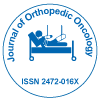Platelet-Rich Plasma (PRP) in Orthopedics: Mechanisms, Efficacy, and Controversies
Received Date: Jan 01, 2025 / Published Date: Jan 31, 2025
Abstract
Platelet-rich plasma (PRP) has emerged as a promising orthobiologic therapy for musculoskeletal disorders, leveraging autologous growth factors to accelerate tissue repair and regeneration. PRP is derived from centrifuged whole blood, resulting in a concentrated plasma rich in platelets, cytokines, and bioactive proteins that modulate inflammation, angiogenesis, and cellular proliferation. Its applications in orthopedics include the treatment of osteoarthritis, tendon and ligament injuries, and fracture healing. Despite encouraging preclinical and clinical data, PRP’s efficacy remains controversial due to inconsistencies in preparation methods, platelet concentration, and the presence of leukocytes. Additionally, variability in patient responses and the lack of standardized protocols have raised concerns regarding its reproducibility and clinical reliability. While some studies demonstrate significant pain reduction and functional improvement, others suggest limited benefits compared to conventional treatments. This review explores the mechanisms of PRP, evaluates its clinical efficacy across various orthopedic conditions, and discusses the ongoing controversies and future directions in PRP research and application.
Citation: Lures A (2025) Platelet-Rich Plasma (PRP) in Orthopedics: Mechanisms, Efficacy, and Controversies. J Orthop Oncol 11: 310. Doi: 10.4172/2472-016X.1000310
Copyright: © 2025 Lures A. This is an open-access article distributed under the terms of the Creative Commons Attribution License, which permits unrestricted use, distribution, and reproduction in any medium, provided the original author and source are credited.
Share This Article
Recommended Journals
51ºÚÁϳԹÏÍø Journals
Article Tools
Article Usage
- Total views: 113
- [From(publication date): 0-0 - Apr 30, 2025]
- Breakdown by view type
- HTML page views: 79
- PDF downloads: 34
